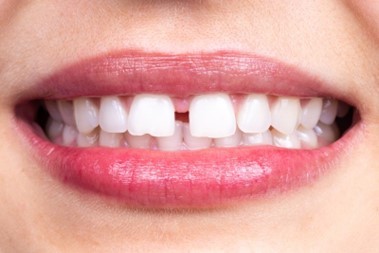
Over time, your smile accumulates all sorts of wear and tear. That’s perfectly normal – teeth age along with the rest of you. Still, you don’t have to bear this fact helplessly. The truth is that cosmetic dentistry helps you look younger. As such, your dental provider could “turn back the clock” and return some youth to your face. Let a local Kansas City dentist explain if you’d like to learn more. To that end, here’s how dental cosmetics de-age your appearance.
By Removing Stains
If you didn’t already know, tooth stains make you seem older. After all, deeply yellow enamel can look grizzled or worn out. This discoloration would then suggest your smile has weathered many years.
Fortunately, professional teeth whitening can correct your stains. This service uses bleaching gel to restore your enamel’s healthy white coloring. In fact, it typically leads to pearly whites that are brighter by six to eight shades. You’d then sport a new, young-looking smile.
By Hiding Chips & Cracks
Sadly, it doesn’t take much for teeth to crack. A simple fall or sports injury can lead to noticeable chips in your enamel. When that happens, the resulting damage could cause your smile to look old. Fractured chompers often appear mature compared to whole ones.
All that said, you could solve things with dental bonding. The latter relies on special resin to hide minor tooth chips and cracks. Shortly after treatment, it would restore some of your face’s youthful glow.
By Aligning Your Smile
As it turns out, people associate dental crowding with age. This issue often results from years of tooth movement and friction. Left alone, the latter forces cause a forward motion that pushes front teeth together.
Luckily, you can count on dental veneers to help. These porcelain layers can hide noticeable crowding from view. Consequently, your smile will seem aligned and vigorous.
By Contouring Your Gums
At times, a person’s aged smile stems from their gum tissue. Gums that suffer an infection will usually look lackluster. Plus, periodontal disease triggers gum recession – something that leads to abnormally large teeth.
Of course, you could try gum recontouring as a potential fix. This option uses a dental laser to balance the pink tissue around your teeth. In doing so, it’ll take years off your grin.
Because cosmetic dentistry helps you look younger, you don’t need to fear old age. Just let your dental provider de-age your face with a pretty smile.
About the Author
Dr. Michael C. Byars is a dentist based in Kansas City, MO, having earned his DDS from the University of Missouri – Kansas City. He’s also an outstanding member of the American Dental Association and the Missouri Dental Association. Given this background, his specialties are preventive, cosmetic, and restorative dentistry, as well as emergency dental services. Dr. Byars currently practices at his self-titled clinic and is reachable on his website and by phone at (816)-781-8222.
The post 4 Ways Cosmetic Dentistry Helps You Look Younger appeared first on Byars Dental Blog.



 Halloween is almost here! As your child heads out the door for a night of trick-or-treating, don’t let the spooky holiday come back to haunt your little one’s
Halloween is almost here! As your child heads out the door for a night of trick-or-treating, don’t let the spooky holiday come back to haunt your little one’s  You can’t put a price on the benefits of an attractive smile. However, if beauty is in the eyes of the beholder, how do you know if your pearly whites are pleasing to others?
You can’t put a price on the benefits of an attractive smile. However, if beauty is in the eyes of the beholder, how do you know if your pearly whites are pleasing to others? 











